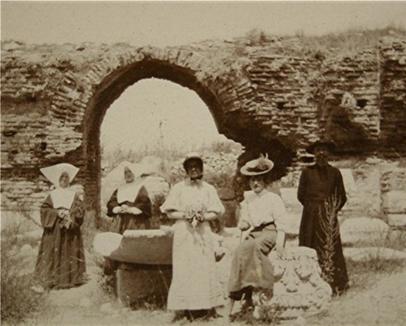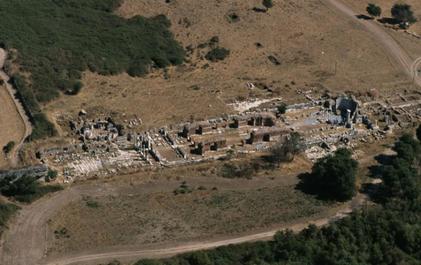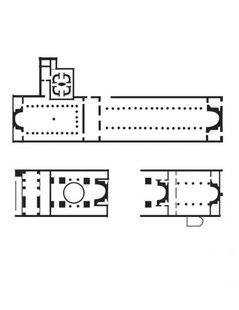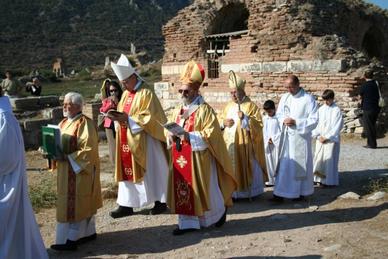Church of Ephesus - Church of St. Mary
|
|
|
|
The Church of St. John & The Church of Mary
The Double Church The Church of Mary not only counts among the most significant of the historical monuments at Ephesus, it is also visited by thousands of tourists and pilgrims annually. This church was the site of the Third Ecumenical Council, convened by Emperor Theodosius II at Ephesus in 431 A.D. The Council was held to resolve a theological debate between two schools of thought about the nature of Christ and of His mother, Mary. One school, led by Nestorius, the Bishop of Constantinople, advocated that Christ was born human and became God, and that His mother should be called merely “Christ-bearer” or Christotokos (Χριστοτόκος). The more popular view, however, was that Jesus was the Son of God, was born God and, therefore, Mary was deserving of the honor of being called the Mother of God, (Θεοτόκος) or “Theotokos.” This view was led by Cyrill, Bishop of Alexandria, which united two natures – human and divine – in Christ. Approximately 250 bishops journeyed to Ephesus from all over and took part in a heated debate over the divine nature of Jesus at birth. In the end, the Council concluded that Jesus was God, born God and Mary was rightly called “Mother of God.” Nestorius was denounced and excommunicated from the Church for his heresy. A torch-light parade exited the church proclaiming Mary as “Theotokos” and it is from this place that today Christians pray, “Holy Mary, Mother of God, pray for us sinners.” A lesser Council was held here in 449 A.D. However, because of the controversial proceedings this second council was not accepted as ecumenical, and was labeled a “Robber Synod” and later repudiated at the Council of Chalcedon. From the 5th Century on, the Church of Mary served without doubt as the seat of the Bishop of Ephesus. Baptismal ceremonies were held in the polygonal Baptistery where thousands of Pagans were converted. This building is without doubt one of the most important testimonials of Early Christianity. The Church of St. Mary, named for the Blessed Virgin herself, was discovered early in the 20th century and is believed to be the very first church in the world named for Mary. A passage in the synodal letter of the first Council of Ephesus reads: “Wherefore also Nestorius, the renewer of the impious heresy, when he had come to the city of the Ephesians, where John the Theologian and the Virgin Mother of God, the Holy Mary . . . from the assembly of the Holy Fathers and Bishops.” Since St. John lived in Ephesus and was buried there (according to Eusebius), it has been inferred that the ellipsis of the synodal letter means either, “where John. . .and the Virgin. . . Mary lived,” or perhaps, “where John. . .and the Virgin. . . Mary lived and are buried.” This passage gives witness to the oral tradition and belief held at that time that both St. John the Apostle and the Blessed Virgin Mary both lived and died at Ephesus. The building received the canonical name of the “holiest church of the most holy, most honoured and eternal virgin Mary.” In later years, a complete alteration of the complex and a massive reconstruction was made necessary due to an earthquake which severely damaged the church. During this renovation, in the region in front of the apse, free-standing stone pilasters were erected instead of the columns; and the west part of the church was rebuilt as a vaulted dome church, with its own apse, using massive brick construction. The church was divided in two, with one part dedicated to St. John the Evangelist and the remainder to Mary, resulting in the name the “Double Church” by some. The Church of St. Mary served as a cemetery church until at least the 11th century, and many graves can be found at the entry plaza. Pope John XXIII (1958-1963) visited ancient Ephesus in 1931 on the 50th Centenary of the Council of Ephesus, held in 431 A.D. as the papal legate in Bulgaria. During that visit, he toured the ruins of the Church of Mary, the site of the famous ecumenical council which declared Mary to be Theotokos, or “Mother of God.” |
|



